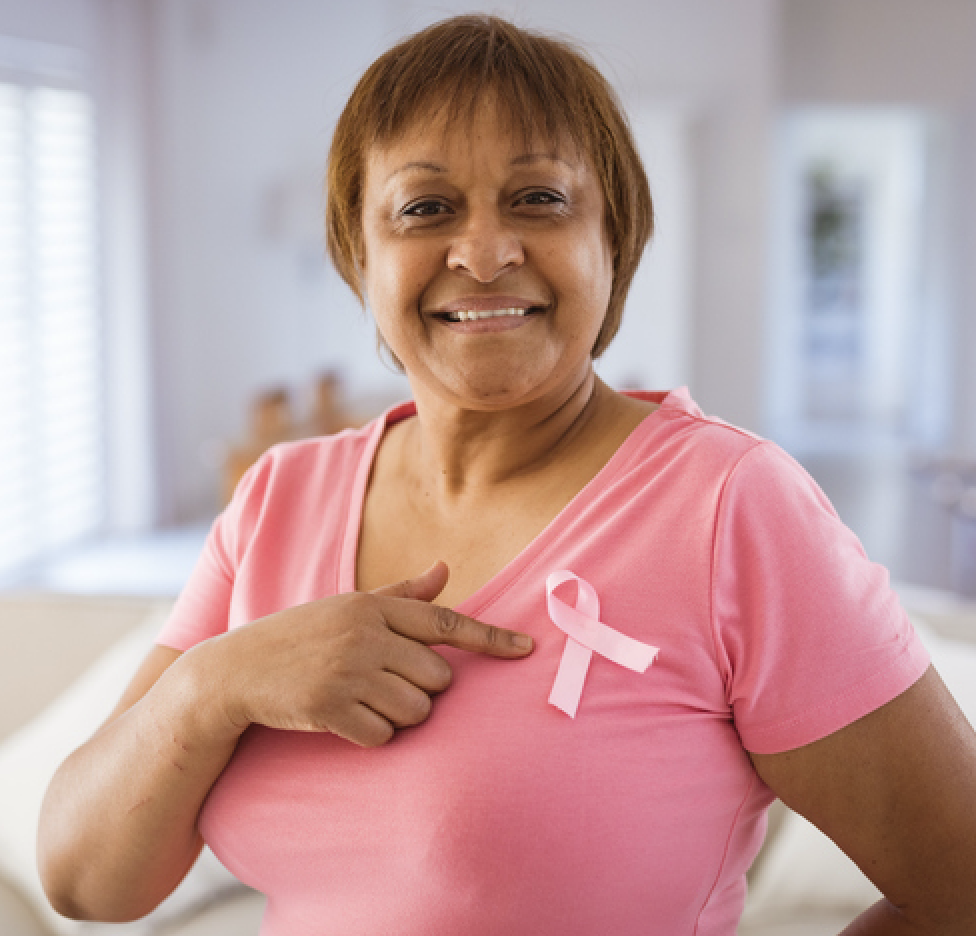In The Pink: Understanding Aging And Breast Cancer
October 22, 2025

For the last 40 years, October has been considered Breast Cancer Awareness month, a time to highlight for women the importance of early screening and routine mammograms to enable early detection and treatment of breast cancer. The American Cancer Society estimates that in 2025 alone, 316,000 US women will be diagnosed with invasive breast cancer, and that 1 in 8 women will be diagnosed with invasive breast cancer in their lives, and 1 in 43 will die as a result. According to the Breast Cancer Research Foundation, breast cancer, like most cancers, is a disease of aging, and the median age for a new breast cancer diagnosis is 63. Almost 20% of women who receive a new breast cancer diagnosis are over age 75. Women in their 70s have the highest rate of breast cancer, and women in their 80s with breast cancer have the highest rates of death. So if you thought your chances declined the older you get, you’ll need to think again, especially because the risks go up the longer you wait to diagnose and treat.
Being diagnosed with breast cancer at an older age and being treated can be a challenge, and may be more complicated, depending on the stage of cancer at the diagnosis. For women who are otherwise healthy, screening and treatment may go in one direction, while for women who already face other serious health challenges, screening and treatment may be less aggressive. It’s complicated, and data is showing that older women don’t always receive appropriate breast cancer treatment- sometimes it’s overly aggressive and sometimes it’s not sufficient. The type of treatment and goals of treatment need to be very patient-specific, and unfortunately, the field of “geriatric oncology” is less than robust. Older adults are often excluded from clinical trials, so there may not be adequate testing of new breast cancer treatments for older women.
The signs/symptoms of breast cancer in older women are similar to those experienced by younger women, including a lump in the breast or armpit, thickening or swelling in the breast or dimpling, pain or redness in the nipple, change in size or shape of the breast, or pain somewhere in the breast. Of course, this raises the question of mammogram screening for older women. The American Cancer Society recommends that women between the ages of 45-54 be screened annually, and those over 55 either be screened annually or every other year, as long as they remain in good health or are expected to live at least another decade. The challenge is that mammograms are often compared to scans from previous years, so if you skip years, it’s possible cancer will be detected at a later stage and therefore more difficult and invasive to treat. This becomes especially concerning for older women, and recent research demonstrates that ongoing mammogram screening of women into their 70s and even 80s can be beneficial in facilitating earlier detection and treatment and therefore better outcomes for those older women.
For example, a recent study from Yale published in JAMA Network Open demonstrated that for women aged 70 and older, those who had a history of screening mammograms within 5 years of their breast cancer diagnosis were much more likely to be diagnosed at an earlier stage and much less likely to die. Patients with prior screening had significantly lower rates of late-stage disease than those who did not have a history of recent screening. In essence, the study demonstrated the benefit of continued screening for women into their 70s so that the disease could be detected earlier with better outcomes as a consequence. As one expert on this study makes clear, “Regular screening, even in older women, may still be able to detect disease at earlier stages when it is associated with better cancer-related outcomes.” Another recent study, this one published in the Annals of Surgical Oncology, found that regular mammograms for women in their 80s may also offer significant benefits, as once again, patients who have a history of regular screening into their 80s often have their breast cancer detected at an eary stage so that treatment can be less intense yet still achieve a very positive result.
The US Preventive Services Task Force, in contrast to the American Cancer Society, does not currently have screening recommendations for women over the age of 75. This new study seems to suggest that regular screening of healthy women into their 80s could prove highly beneficial, especially if treatment can be streamlined to just oral medications. Medicare does cover regular annual screenings. Furthermore, there is documentation that breast cancer rates are rising among minority women aged 65-74. Yet at the same time, there is some concern that treating older women for breast cancer may, in certain circumstances, cause more harm than good. It is possible that, given the specific situation of a particular woman and the stage at which her cancer is diagnosed, starting and continuing aggressive intervention may do little to change her quality of life or length of survival. This just underscores the importance of patient-specific treatment decision-making when it comes to both screening and treatment for breast cancer.
Older breast cancer survivors often face significant challenges. The number of older women who are breast cancer survivors has grown in recent years, as patients are living longer and have either aged into survivorship or have been diagnosed at later ages. Long-term survivors are known to live with fatigue and chronic pain and may be at increased risk of falls and fractures, along with frailty and diminished cognitive health. There is also recent research that breast cancer survivors may face accelerated aging tied to either their treatment or disease advancement. A recent study in the journal Aging documented that 4 million women in the US alone are breast cancer survivors, and they often face faster cognitive and physical decline compared to women who have not had breast cancer. It’s not clear if that’s due to treatment (chemotherapy can cause cellular senescence, for example) or whether it’s due to other demographic and lifestyle factors. There is some evidence that exercise can reduce the risk of recurrence by up to 46% in breast cancer survivors.
In summary, during this month of breast cancer awareness, it’s important for all women, in consultation with their physicians, to determine what level of screening and treatment is right for them. But the evidence seems clear that older women are at risk for breast cancer, and the earlier a diagnosis is made, the better the chance of treatment that can limit side effects and result in a positive outcome.







